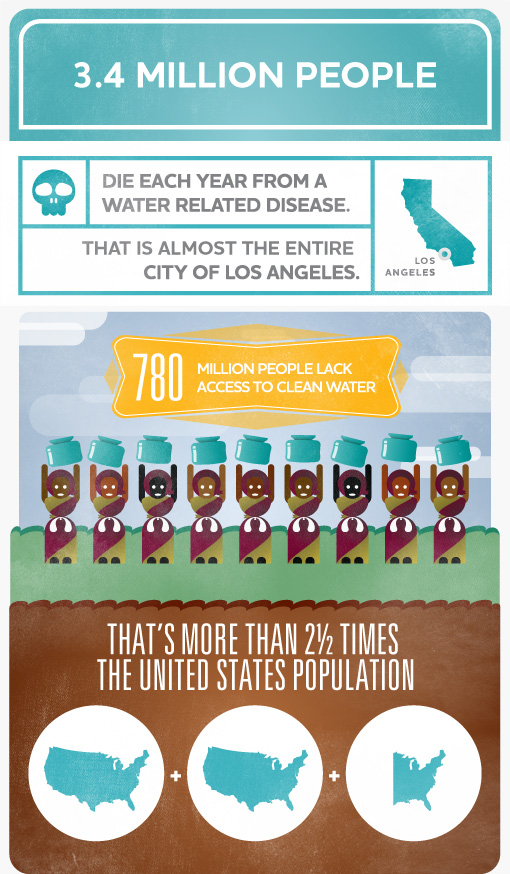So one of the great projects I get to work on is a monitor for water pumps.
This is an amazing (to me) graphic from water.org:

Credit: water.org (http://static.water.org/public/01_water_2012.jpg)
780 million!!! That’s ridiculous (and not in the funny way)! Something needs to be done about this.
Here at the Technology Center, we’ve begun partnering with great organizations, to help them bring clean, safe drinking water to the people who need it. Our focus is to make sure that the water supply is:
a) reliable
b) accountable
We’ve developed a low-cost, satellite-based monitoring system. We can see, hour by hour, whether the pump is working, and how much water it is producing.
If somebody has the heart to install a water pump for a community in need, we can give them the data they need to tell when it is operating properly, and when it is broken, when it needs more capacity, and when it’s *starting* to show issues. These all help make sure that the system is *reliable*, that the community can use it and count on it to provide them with the safe, clean water they need.
If somebody has the heart to sponsor a water pump for a community in need, they can see when it was installed, how well it’s operating, and how many families it serves. They can see how many litres (or gallons) of water the pump has produced in the last day, week, year, etc., and the average cost per gallon for the project. These projects aren’t cheap: the most recent installation was over $250 000. That sounds like a lot of money because it is. But: In the few short weeks since it was installed, the average cost per gallon has dropped to under $1. $1 for almost 4 litres of clean safe drinking water is a great price! Over the estimated lifespan of the pump, we’ll see that number drop to less than a penny per litre!!! That’s fantastic! And totally worth the investment!!
You can check out a sample community here: sonsetwaterlink.org/water
This is our site for supporters and charities to log in, and monitor the pumps. The data you’ll see is *actual* data from an *actual* community. To protect the privacy of the community, we won’t tell you where it *actually* is, and we’ve anonymized the data. Nonetheless, it will give you a decent sense of what we’re up to.
Comments are closed